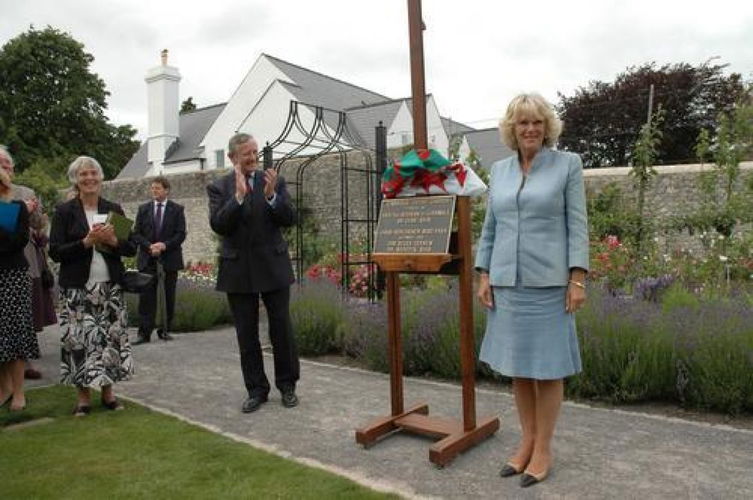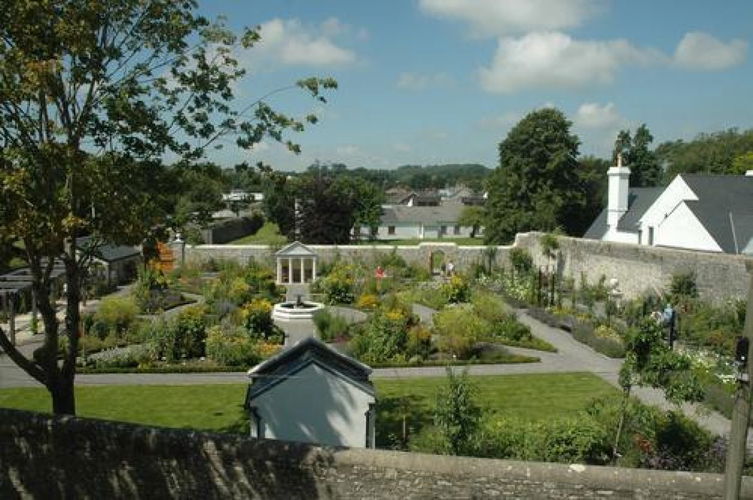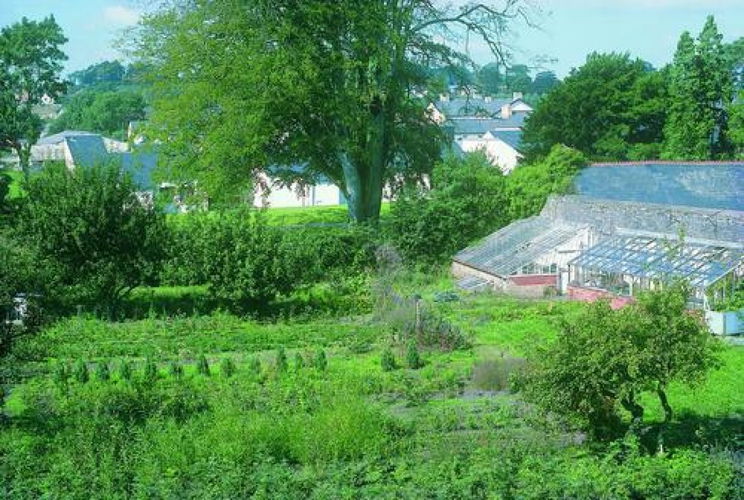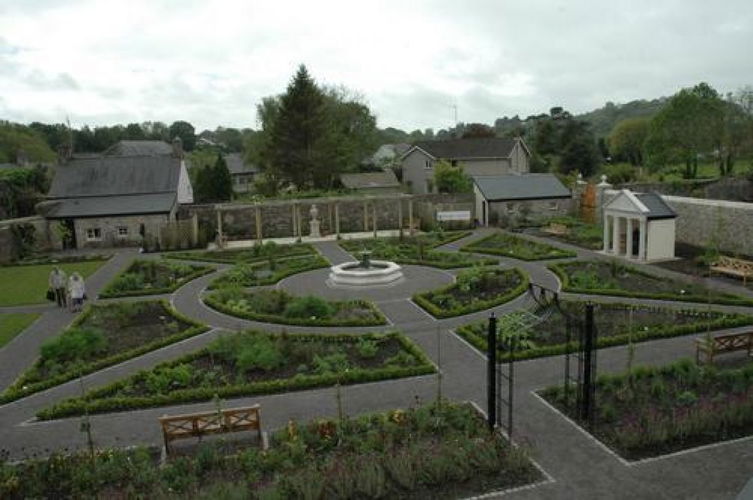




Introduction
The Physic Garden is on the site of part of the formal gardens of Old Hall. It was developed between 2004 and 2007 to show the uses of plants in the past. All the plants in the garden were found in Britain before 1800 and have associations with healing, cooking or the dyeing of fabrics.
The formal layout of the new Physic Garden is brought out by the addition of two stone pavilions and a central fountain. Twelve central beds hold plants with perceived or actual medicinal properties, all known to have been grown in Britain before 1800. The planting is themed around cures for specific illnesses or parts of the body.
- Visitor Access, Directions & Contacts
Telephone
01446 774534Access contact details
The garden is open every day except Christmas Day, 10am to 4pm in winter and 10am to 6pm in summer.
Owners
The Vale of Glamorgan Council
- History
The land on which Cowbridge Physic Garden stands has had a variety of uses over the last two hundred years. It was originally part of the garden of Old Hall which was owned by the Edmondes family for nearly two centuries.
The earliest pictorial record of the garden is the first edition OS map of 1879 which shows a rectangular layout of paths in the area now occupied by the garden, quite different from the large trees shown in the main part of Old Hall garden. This must have been the organised, cultivated, part of the gardens and it is likely that something of this nature has existed on the site ever since the Edmondes family developed Old Hall in the 1740s.
From 1932 to 1975 the land on which the garden stands had been the kitchen garden of the boarding house of Cowbridge Grammar School. There were greenhouses, heated by furnaces, on the south-facing wall and the two small buildings on the north-facing wall (now the volunteer room and potting shed) were used for gardening supplies. During these years there were fruit trees and vegetables in abundance. Especially during the ‘Dig for Victory' campaign of World War 2, the schoolboys were often enlisted to help in the cultivation of vegetables. The Bovian, the school magazine, records: "Teams of boys engaged quite capably in digging, weeding, planting and watering ... while Mr Penny (the school gardener) detailed squads of boys for this job or that". By the summer of 1941, the garden not only supplied the boarders' kitchen, but also managed to yield nearly all the vegetables for the day boys' dining hall, which provided 400 meals a week.
When boarding ceased in 1975, the need for a vegetable garden also ended. South Glamorgan Council developed a tree nursery on the site but the idea was eventually abandoned, leaving growing trees untended, a situation which continued after the local authority reorganization when the site was taken over by the Vale of Glamorgan Council.
By 2003 the abandoned tree nursery was a site on which tall trees and saplings grew very close together, competing with each other in their search for light. The South & Mid Glamorgan branch of the Welsh Historic Gardens Trust became concerned about the state of the site and the decision was made that it should become a physic garden open to the public. At this stage the Cowbridge Physic Garden Trust, the organization which now runs the garden, was established and work began to clear the virtually impenetrable woodland. The development of the garden has been achieved almost solely by volunteer effort and thanks to committed work, enthusiasm and successful fund raising, the ancient walls and building were repaired, beds laid out, plants sourced and planted. In 2008, HRH the Duchess of Cornwall, the garden's Patron, performed the formal opening ceremony. Volunteers continue to maintain the garden to an exceptionally high standard; a feat recognized four years in succession by the presentation of the coveted ‘Green Pennant' award.
- Features & Designations
Plant Environment
- Environment
- Walled Garden
Features
- Pavilion
- Description: Two stone pavilions.
- Fountain
- Description: Central fountain.
- Medicinal Bed
- Description: Twelve central beds hold plants with perceived or actual medicinal properties, all known to have been grown in Britain before 1800.
- Key Information
Type
Collection
Purpose
Ornamental
Plant Environment
Environment
Principal Building
Parks, Gardens And Urban Spaces
Survival
Reconstructed
Open to the public
Yes
- References
References
- Hilary M. Thomas {Historic Gardens of the Vale of Glamorgan} (Welsh Historic Gardens Trust, 2007) 40 Historic Gardens of the Vale of Glamorgan
Contributors
Jean Reader